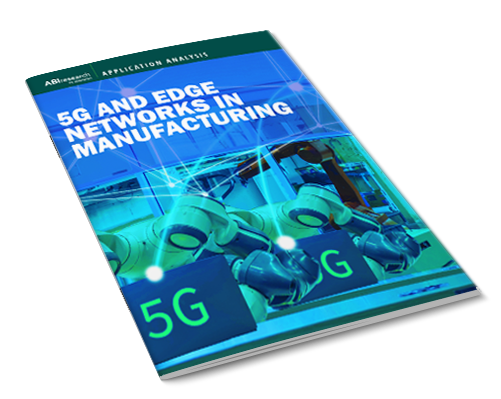5G and Edge Networks in Manufacturing【分析レポート:アプリケーション】製造業の5Gとエッジネットワーク Actionable Benefits Determine a set of measurements for smart manufacturers to gauge the benefit of 5G and edge computing in the factory floor. Understand Industry 4.0 market dyna... もっと見る
Summary
|
|
ABIリサーチの調査レポートの詳細については、サンプルをご請求ください。 (株式会社データリソース 03-3582-2531、) |
Table of Contents
1. EXECUTIVE SUMMARY
2. RECOMMENDATIONS
3. DRIVERS AND INHIBITORS FOR 5G AND EDGE IN MANUFACTURING
3.1. Trends and Drivers for 5G and Edge in Manufacturing
3.2. Inhibitors
4. TECHNOLOGY OVERVIEW
4.1. 5G Core
4.2. Edge Computing
4.3. Network Slicing
4.4. 5G Private Networks versus 5G Slices
4.5. AI and ML in Manufacturing
4.6. Technological Forces Shaping Supply Chains
5. DEPLOYMENT AND BUSINESS MODEL OVERVIEW
5.1. Business Model for 5G
5.2. Business Model for Edge Computing
5.3. Software-as-a-Service Business Models
6. 5G AND EDGE MANUFACTURING USE CASES
6.1. Video Analytics
6.2. Collaborative Robotics
6.3. Predictive Maintenance
6.4. Massive IoT Tracking
6.5. Supply Chaining
7. MARKET FORECASTS
8. PROFILES OF KEY COMMERCIAL ENTITIES
8.1. Telco Infrastructure Vendors
8.1. Communications Service Providers
8.2. System Integrators in Manufacturing
Companies Mentioned
-
AccentureAmazonAmdocsAT&TBMW
-
CapgeminiDeutsche TelekomDHLEricssonGoogle
-
HuaweiMicrosoftNetcrackerNokiaSchneider Electric
-
TelefonicaTelia CarrierWal-MartZTE
ご注文は、お電話またはWEBから承ります。お見積もりの作成もお気軽にご相談ください。
本レポートと同分野(通信規格)の最新刊レポート
- GPON WIFI6ホームゲートウェイの世界市場成長率 2024-2030
- 5G衛星インテグレーション:開発と動向
- 5G対応テレマティクスコントロールユニット(TCU)市場:製品タイプ、エンドユーザー、地域別(北米、欧州、アジア太平洋地域、中南米、中東・アフリカ):世界の産業分析、規模、シェア、成長、動向、予測、2024-2033年
- 5Gプリント基板産業調査レポート 2024年
- プライベート5Gネットワーク:2024~2030年 - 機会、課題、戦略、予測
- 北米のプライベート5Gネットワーク市場の2030年までの予測 - 地域別分析 - コンポーネント別(ハードウェア、ソフトウェア、サービス)、周波数別(サブ6GHz、ミリ波)、エンドユーザー別(製造、エネルギー・公益事業、自動車、軍事・防衛、政府・公共安全、その他)
- 中南米の5G基地局市場の2030年までの予測 - 地域別分析 - コンポーネント別(ハードウェア、サービス)、周波数帯域別(2.5GHz未満、2.5GHz~8GHz、8GHz~25GHz、25GHz以上)、セルタイプ別(マクロセル、スモールセル(マイクロセル、ピコセル、フェムトセル))、エンドユーザー別(産業用、商業用、住宅用)
- 2025年 国内における「6G×想定ユースケース(事例)」に関する網羅的な調査(公開事例:30社×300枚付き)
- スマートトイレの世界市場:製品タイプ別(床置き型、壁掛け型、その他)、接続性別(Bluetooth&遠隔操作、Wi-Fi&統合制御)、用途別(商業用、住宅用)、流通チャネル別(オフライン、オンライン)、COVID-19の影響による地域別規模と動向、2029年までの予測で分析
- 航空宇宙・防衛分野における5Gの世界市場規模調査:通信インフラ別(マクロセル、スモールセル)、運用周波数別(高、低、中)、コアネットワーク技術別(フォグコンピューティング、モバイルエッジコンピューティング、ネットワーク機能仮想化、ソフトウェア定義ネットワーキング)、エンドユース別(航空機、空港、国土安全保障、軍事)、地域別予測:2022年~2032年
ABI Research社の調査レポート(単冊購入可能)分野での最新刊レポート
- 【マーケットデータ】安全なスマートカードと内蔵セキュリティ用IC技術
- 【マーケットデータ】IoTセルラーモジュールモデルの市場トラッカー
- 【マーケットデータ】5Gモバイルデバイス、機能、および技術:ベンダー、トレンド、および予測
- 【マーケットデータ】モバイル機器用新技術のトラッカー
- 【分析レポート:アプリケーション】モバイルIDと派生クレデンシャル
- 【マーケットデータ】商業ビルの自動化
- 【マーケットデータ】モバイルアクセサリーとウェアラブル市場のシェアと予測
- 【PT:プレゼンテーション分析レポート】産業・製造業半期報告書:2022年上期
- 【PT:最新市場】未来の5Gモバイルデバイス:報告された機能と特徴
- 【マーケットデータ】5Gのネットワークスライシングと業種別のマーケットデータ
本レポートと同じKEY WORD()の最新刊レポート
- 本レポートと同じKEY WORDの最新刊レポートはありません。
よくあるご質問
ABI Research社はどのような調査会社ですか?
ABIリサーチは、米国ニューヨークに本社をおき、幅広い視点で通信関連分野についての調査レポートを出版しています。通信、移動体・無線、IoTとM2M、位置情報、自動車技術、セキュリティ等に関して、産業・... もっと見る
調査レポートの納品までの日数はどの程度ですか?
在庫のあるものは速納となりますが、平均的には 3-4日と見て下さい。
但し、一部の調査レポートでは、発注を受けた段階で内容更新をして納品をする場合もあります。
発注をする前のお問合せをお願いします。
注文の手続きはどのようになっていますか?
1)お客様からの御問い合わせをいただきます。
2)見積書やサンプルの提示をいたします。
3)お客様指定、もしくは弊社の発注書をメール添付にて発送してください。
4)データリソース社からレポート発行元の調査会社へ納品手配します。
5) 調査会社からお客様へ納品されます。最近は、pdfにてのメール納品が大半です。
お支払方法の方法はどのようになっていますか?
納品と同時にデータリソース社よりお客様へ請求書(必要に応じて納品書も)を発送いたします。
お客様よりデータリソース社へ(通常は円払い)の御振り込みをお願いします。
請求書は、納品日の日付で発行しますので、翌月最終営業日までの当社指定口座への振込みをお願いします。振込み手数料は御社負担にてお願いします。
お客様の御支払い条件が60日以上の場合は御相談ください。
尚、初めてのお取引先や個人の場合、前払いをお願いすることもあります。ご了承のほど、お願いします。
データリソース社はどのような会社ですか?
当社は、世界各国の主要調査会社・レポート出版社と提携し、世界各国の市場調査レポートや技術動向レポートなどを日本国内の企業・公官庁及び教育研究機関に提供しております。
世界各国の「市場・技術・法規制などの」実情を調査・収集される時には、データリソース社にご相談ください。
お客様の御要望にあったデータや情報を抽出する為のレポート紹介や調査のアドバイスも致します。
2025/04/25 10:26
144.11 円
164.02 円
194.52 円


 Actionable Benefits
Actionable Benefits